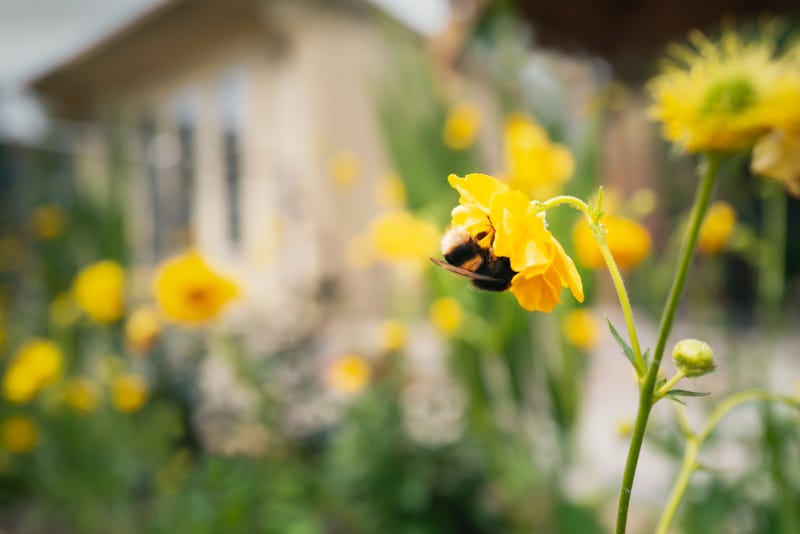
You’ve probably heard the phrase, or heard it in your local community. It’s a campaign that is trying to get you to leave the lawnmower in the garage this month called “No Mow May”.
Proponents say that leaving grass alone this month helps pollinators such as bees thrive when they are coming out of hibernation at this time of year.
WCCO Radio’s Adam Carter talked to Elaine Evans, extension professor and researcher at the University of Minnesota’s Department of Entomology. Evans says they’ve been working on a way to increase pollinators for a while and this is a great trend for those crucial insects.
“We've been working on something called bee lawns for about ten years,” Professor Evans told WCCO. “We've been doing research to figure what kind of flowers people can get into their lawns. Different ways for people to manage their lawns to have all that space that we have around our homes also function as habitat for bees and other pollinators.”
Evans explains how not mowing your grass this month can help pollinators.
“The idea is to have more flowers that are blooming in your lawn,” Evans says. “So it doesn't necessarily need to be literally the whole month of May. But the idea is that in early spring there are a lot of bees that are coming out of hibernation, they're hungry, and they need food. Depending on what's going on in the year, this year in particular with the weather, it's really variable and sometimes there's just not so many flowers that are out there.”
Evans says things like dandelions and clover in your lawn can help fill the gap until flowers start to bloom. She adds that if you don’t want dandelions growing everywhere, it doesn’t hurt to go through and mow them down prior to going to seed.
“What we really hope is people do take some extra steps and add more flowers into their lawns or into their gardens, especially native plants,” Evans explains. “There are a lot of different plants we can add that will help feed more diverse pollinators.”
There has been concern over the lack of bees and other pollinators across the U.S. and they are a crucial cog in the food chain. Evans says some of these gardening practices can help revive certain species of bees and pollinators. There are around 489 species of bees just in Minnesota according to Evans. While most are “doing fine”, she says some of those species we know are in trouble.
“We have an endangered species of bee that that can be regularly found in the Twin Cities, the rusty patched bumble bee,” Evans said. “So a lot of people are excited about providing habitat for them because you can actually have an endangered species that shows up in your backyard.”
Evans says that most people don’t realize the importance bees and pollinators play in our ecosystem.
“Those pollinators are doing a lot in our in our gardens for things like tomatoes and zucchinis and strawberries, helping raspberries, helping all those things get pollinated and produce fruit,” Evans says. But then they're also pollinating all of these other plants. It's about 80% of plants that are dependent on animals for their pollination.”
Evans says the biggest things you can do in your yard is plant flowers, especially those that attract pollinators, and avoid using harmful pesticides in order to keep the plants and the pollinators healthy.
You can find more information here on how to use your lawn to create a space for pollinators and bees.
LISTEN on the Audacy App
Sign Up and Follow Audacy
Facebook | Twitter | Instagram

